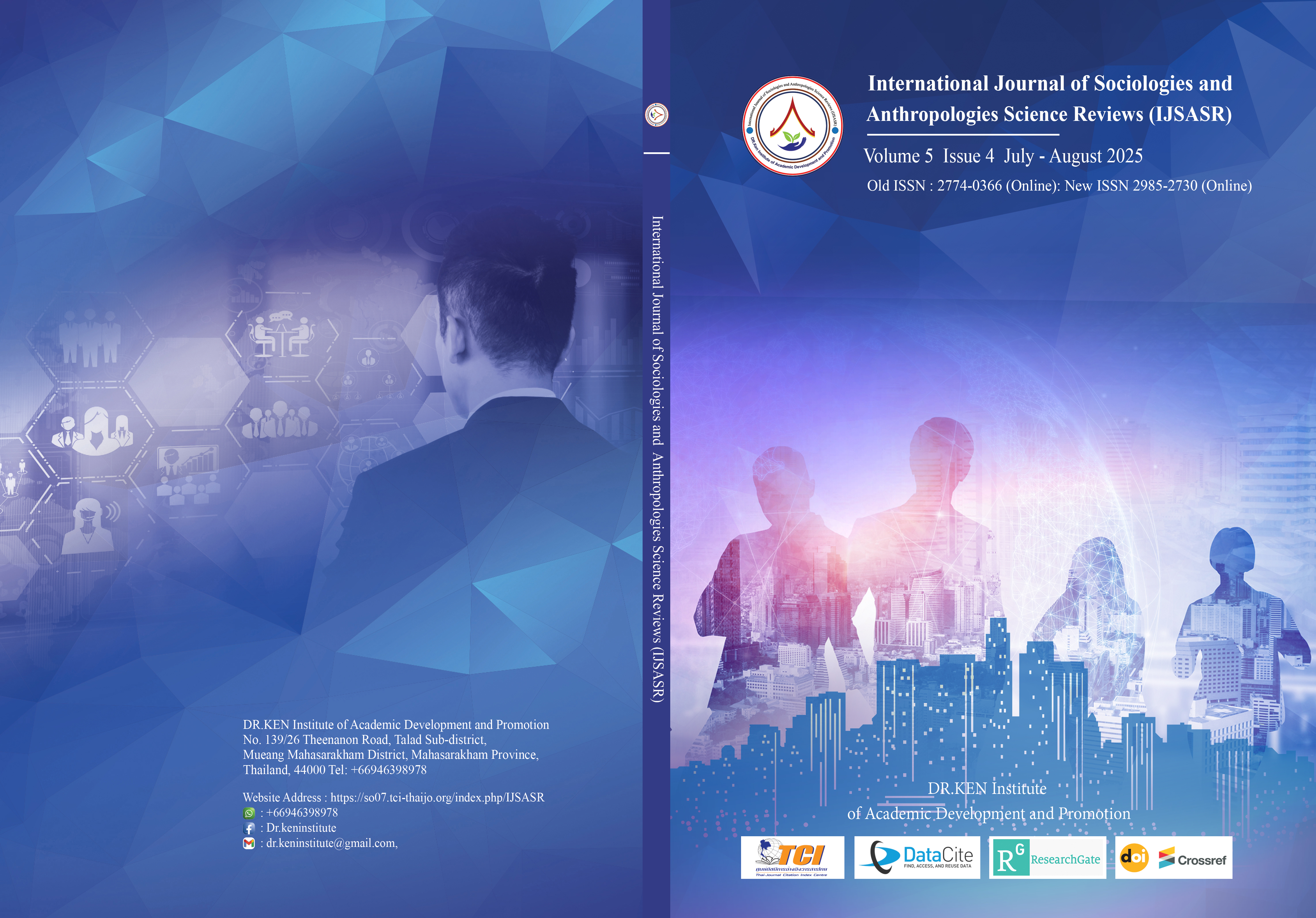Effect of Problem-based Learning on the Biology Summarizing Ability of Eighth-Grade Students of Zhengzhou No.1 Middle School in the People's Republic of China
Main Article Content
Abstract
Background and Aims: The impact of Problem-Based Learning (PBL) on biology summarizing ability has far-reaching research significance, and this learning method emphasizes the problem-oriented approach to cultivate students' comprehensive ability and innovative thinking through the processes of problem posing. This experimental research aimed to 1) compare biology summarizing ability before and after learning through Problem-Based Learning.2) To compare biology summarizing ability with the criterion set at 70 percent.3) To assess the student’s satisfaction with Problem-Based Learning.
Materials and Methods: The sample was 30 students from eighth-grade students from Zhengzhou NO.1 Middle School, People's Republic of China. They come from cluster random sampling. Data on students' biology summarizing ability before and after the implementation of the problem-based teaching method were collected through a questionnaire. SPSS software was used to analyze the collected data, including the mean value of samples, standard deviation, and single-sample t-test.
Result: The results showed that 1) the students’ biology summarizing ability after learning through receiving Problem-Based Learning (M=47.43, SD=4.40) was higher than that before learning (M=35, SD =5.18) at a significance level of.01(t29=17.58, p=.001); 2) the students' biology summarizing ability after learning through Problem-Based Learning was higher than the determined criterion of 70% at a significance level of.01(M = 47.43 of full scores, 75, SD = 3.41, t29= 28.63, p=.001) and 3) Students were satisfied with the learning management using the Problem-Based Learning method (M = 4.02, SD = 0.77).
Conclusion: The knowledge gained from this study is that 5-step teaching using the problem-based learning approach can be effective in improving the performance of students on the Biology Summative Aptitude Test, and it stimulates students' interest in learning by Step 1: Extract key information Step 2: Concise expression Step 3: Integrate knowledge Step 4: Summary Step 5: Relational thinking. It develops students' independent learning ability and meets their individual learning needs. This is a new trend in the future of education.
Article Details

This work is licensed under a Creative Commons Attribution-NonCommercial-NoDerivatives 4.0 International License.
Copyright on any article in the International Journal of Sociologies and Anthropologies Science Reviews is retained by the author(s) under the under the Creative Commons Attribution-NonCommercial-NoDerivatives 4.0 International License. Permission to use text, content, images, etc. of publication. Any user to read, download, copy, distribute, print, search, or link to the full texts of articles, crawl them for indexing, pass them as data to software, or use them for any other lawful purpose. But do not use it for commercial use or with the intent to benefit any business.

References
Almulla, M. A. (2020). The Effectiveness of the Project-Based Learning (PBL) Approach as a Way to Engage Students in Learning. SAGE Open, 10(3), 2158244020938702. https://doi.org/10.1177/2158244020938702
Aslan & Duruhan (2021). The effect of virtual learning environments designed according to problem-based learning approach on students’ success, problem-solving skills, and motivations. Education and Information Technologies, 26, 2253–2283. https://doi.org/10.1007/s10639-020-10302-2
Barrows, H. S. (2020). Problem-based learning: An approach to medical education. Springer.
Deng, K., Feng, L., Ji, S., & Zhang, Q. (2023). The applications of problem-based learning method in China's high schools’ science teaching. BCP Education & Psychology ERHSS. 9, 1-10.
Guo, L. (2021) Experience in Cultivating Students' Ability to Summarize and Summarize in Biology Teaching. Science Education, 5, 16-17
Luke, A. M., Mathew, S., Kuriadom, S. T., George, J. M., Karobari, M. I., Marya, A., & Pawar, A. M. (2021). Effectiveness of Problem-Based Learning versus Traditional Teaching Methods in Improving Acquisition of Radiographic Interpretation Skills among Dental Students—A Systematic Review and Meta-Analysis. Biomed Res Int, 2021, 9630285. https://doi.org/10.1155/2021/9630285
Mafarja, N., Mohamad, M. M., Zulnaidi, H., & Fadzil, H. M. (2023). Using of reciprocal teaching to enhance academic achievement: A systematic literature review. Heliyon, 9(7), e18269. https://doi.org/10.1016/j.heliyon.2023.e18269
Mohd Yusof, N. A. B., & Jamaludin, A. A. B. (2022). Effect of problem-based learning implementation in science and biology field: A literature review. Department of Biology, Faculty of Science and Mathematics, Universiti Pendidikan Sultan Idris.
Zhao, Y.-J., Huang, F.-Q., Liu, Q., Li, Y., Alolga, R. N., Zhang, L., & Ma, G. (2023). The effect of problem-based learning on improving problem-solving, self-directed learning, and critical thinking ability for pharmacy students. bioRxiv. https://doi.org/10.1101/2023.10.26.564146






